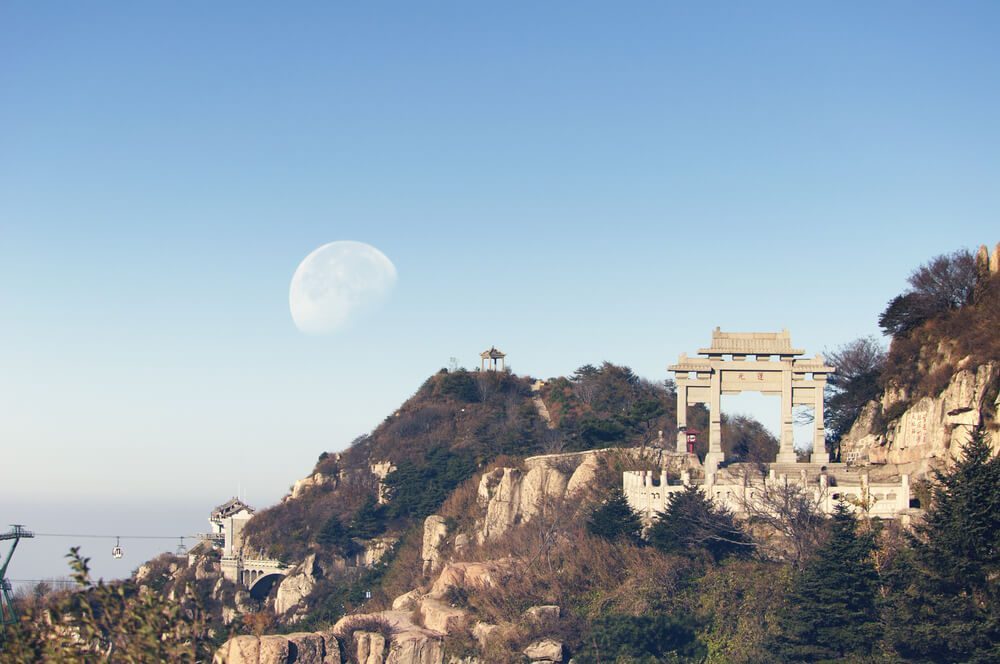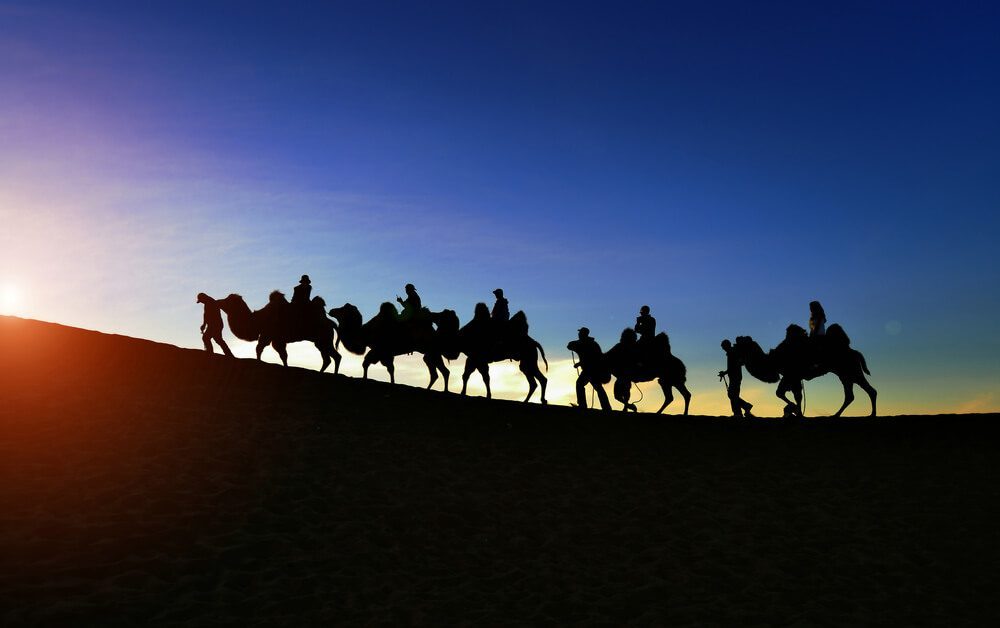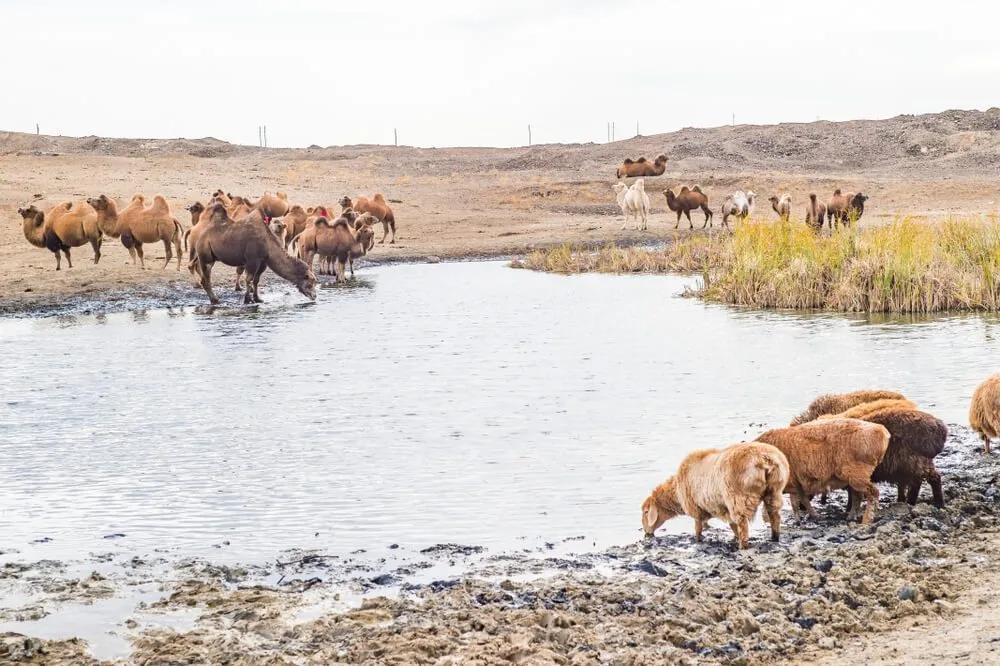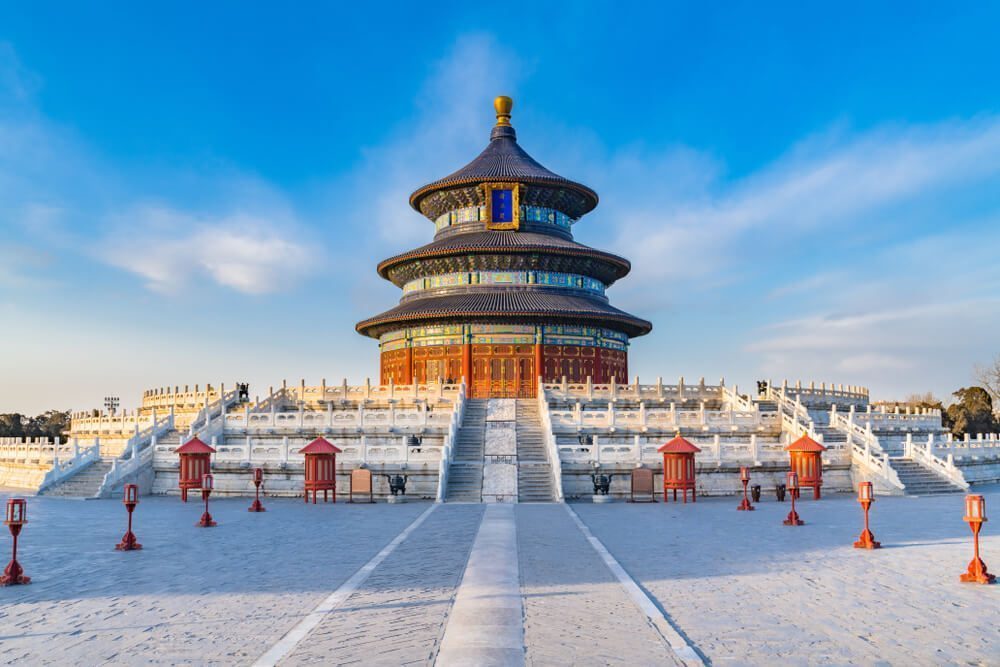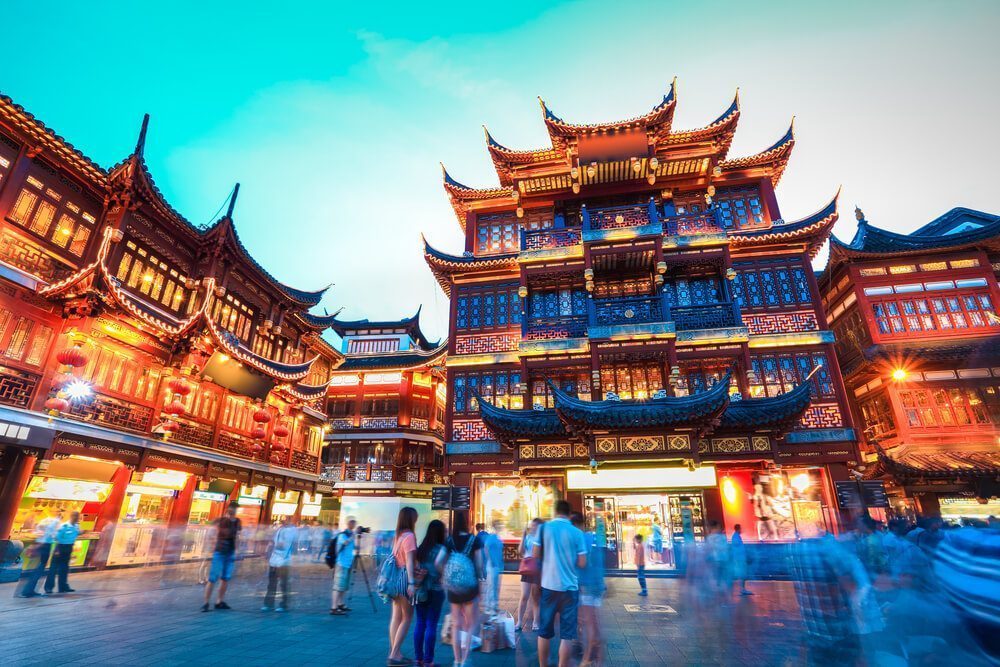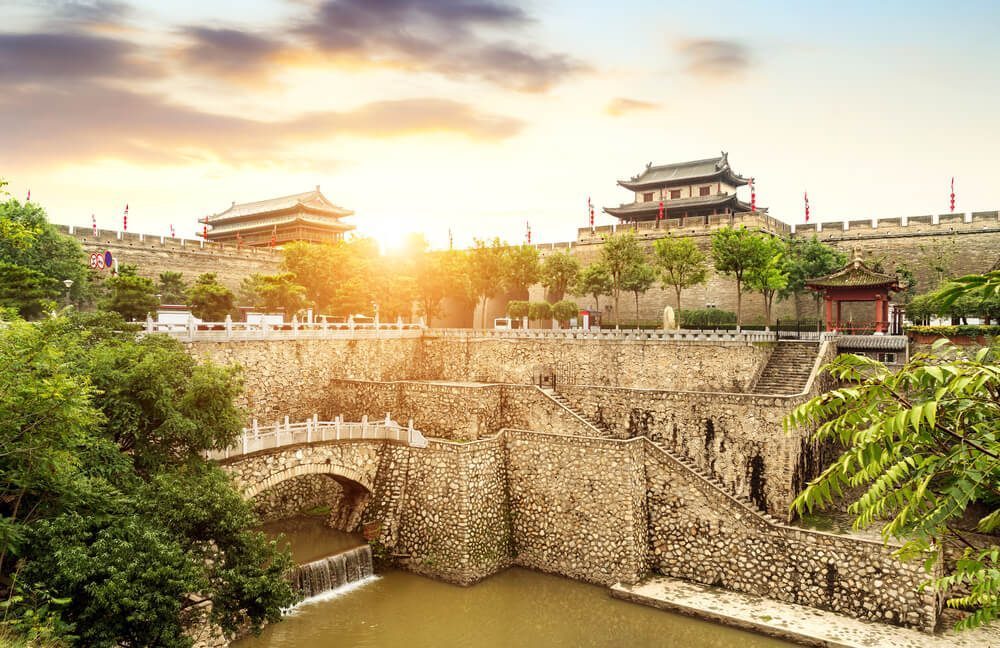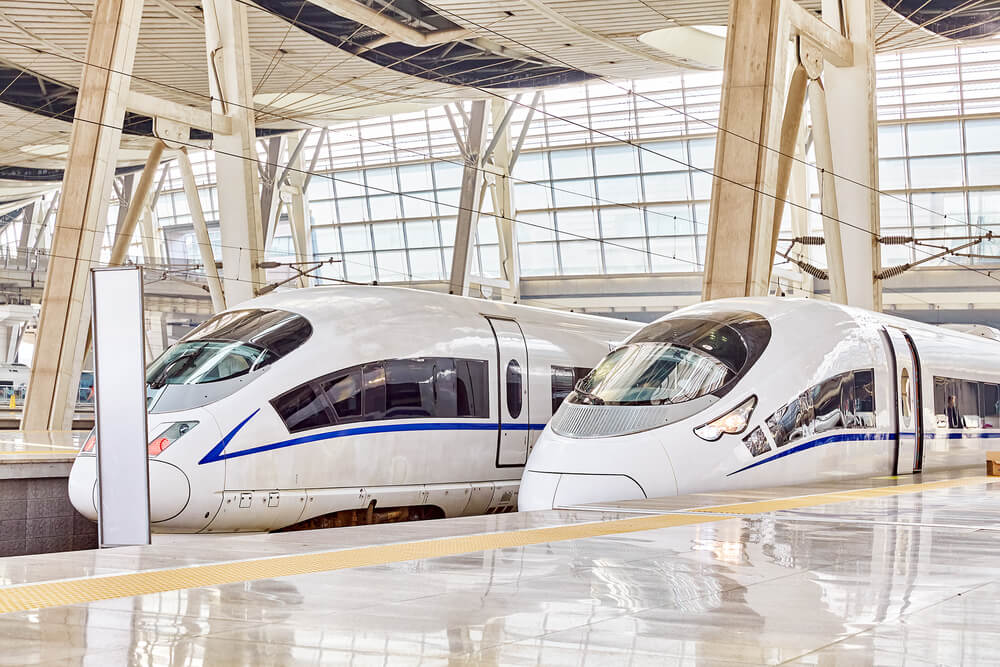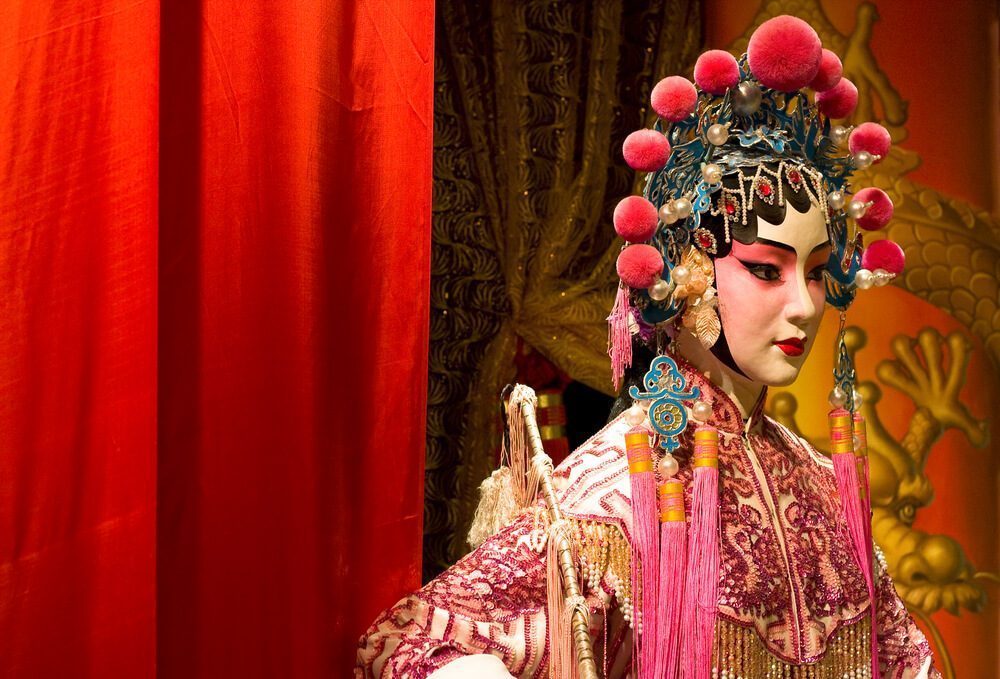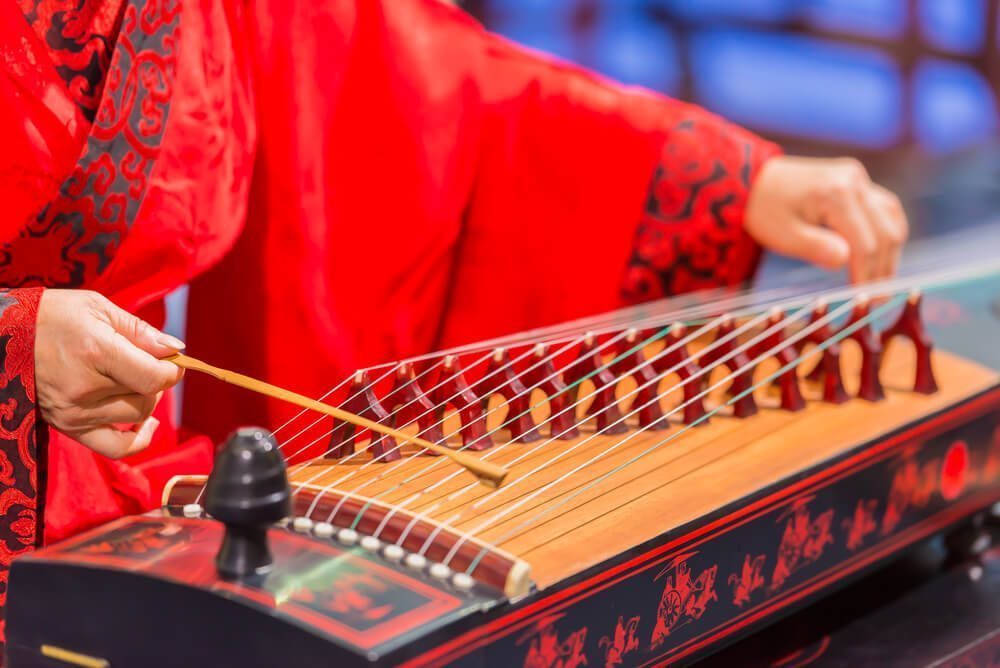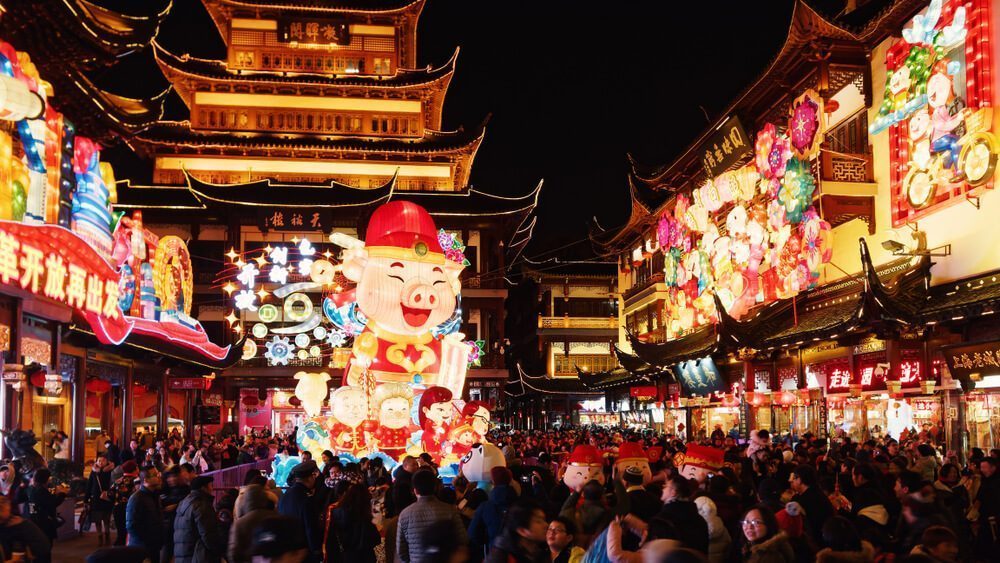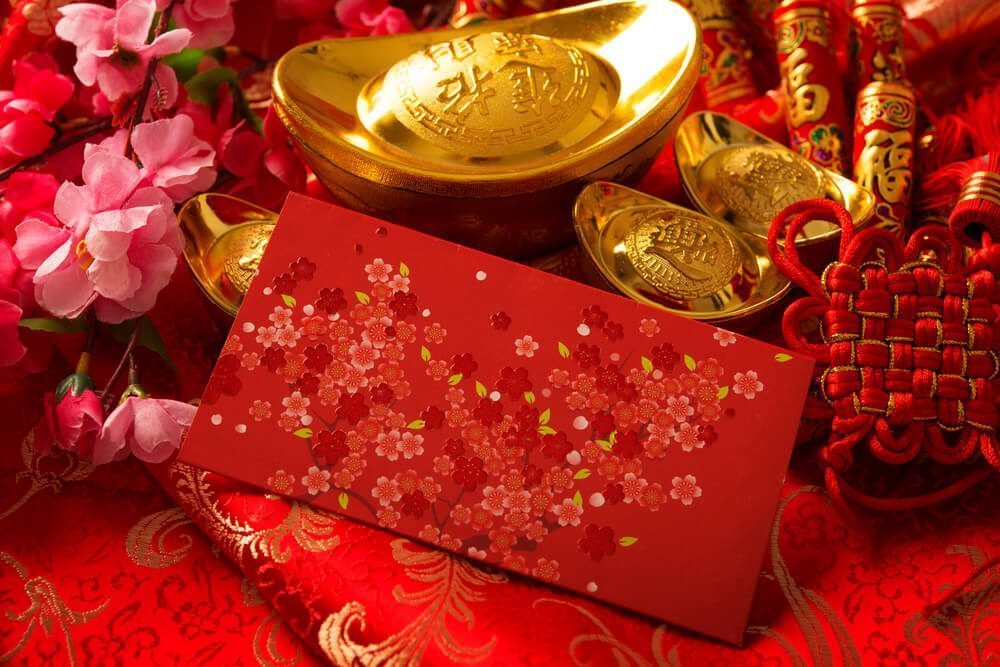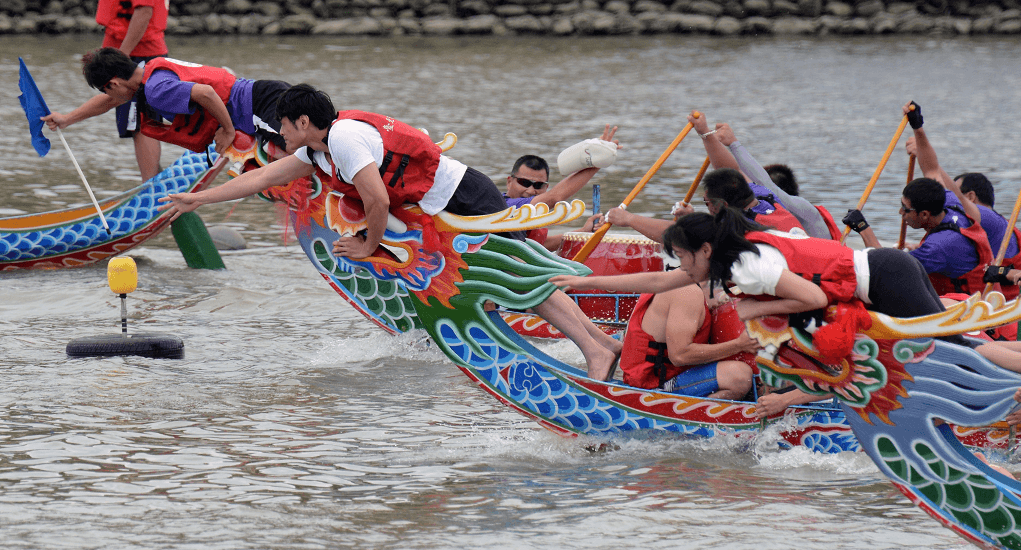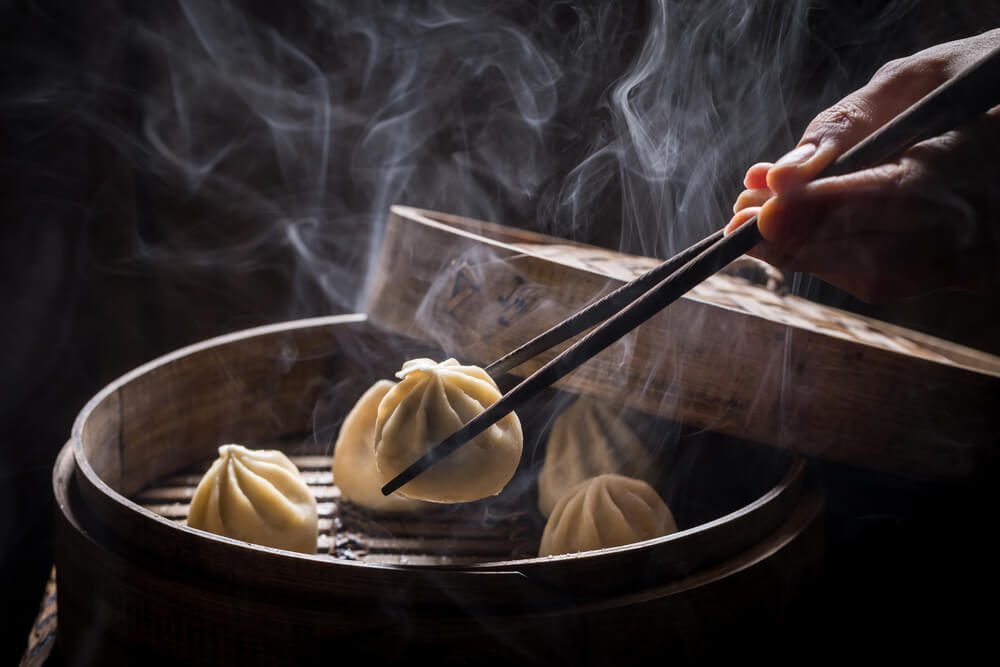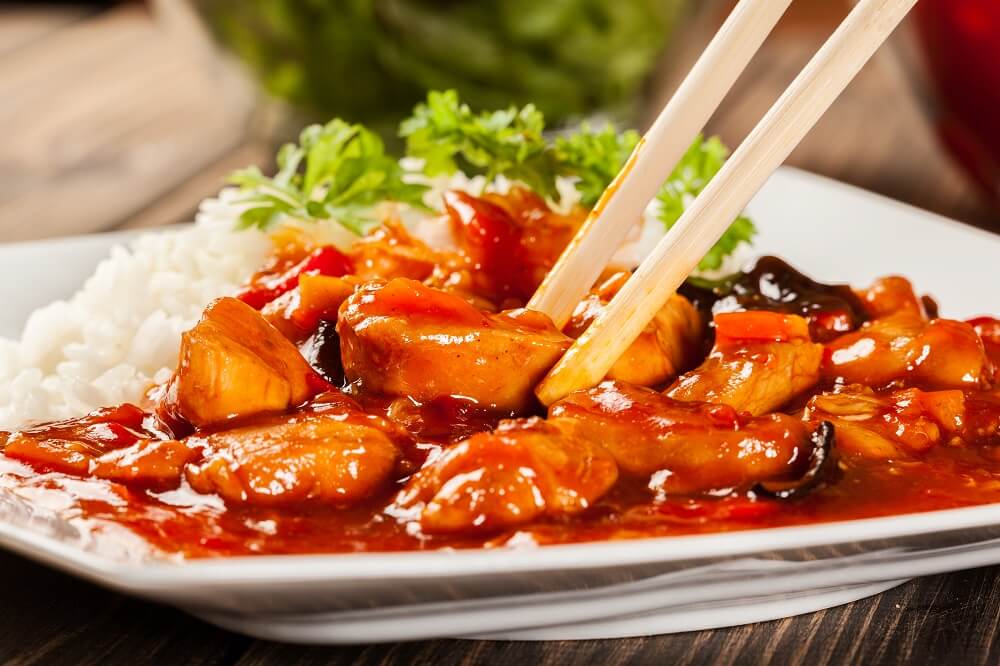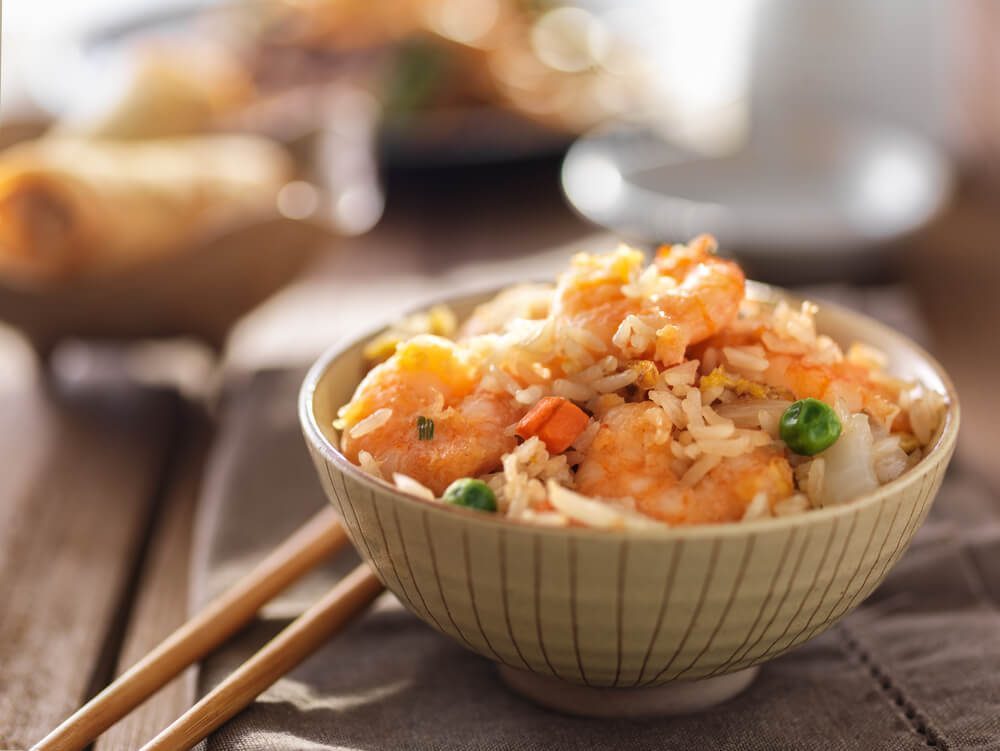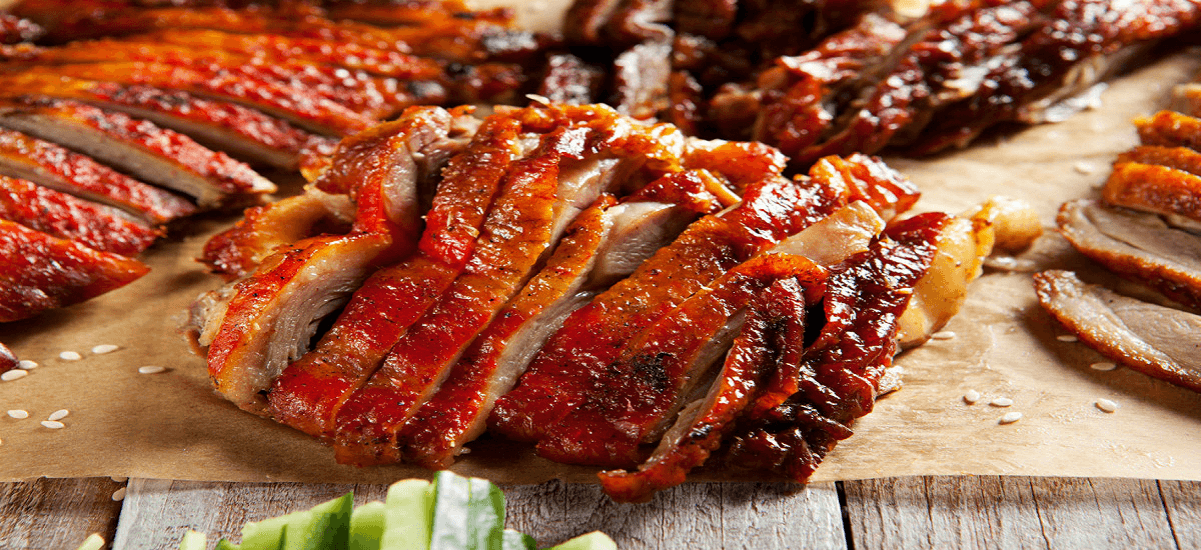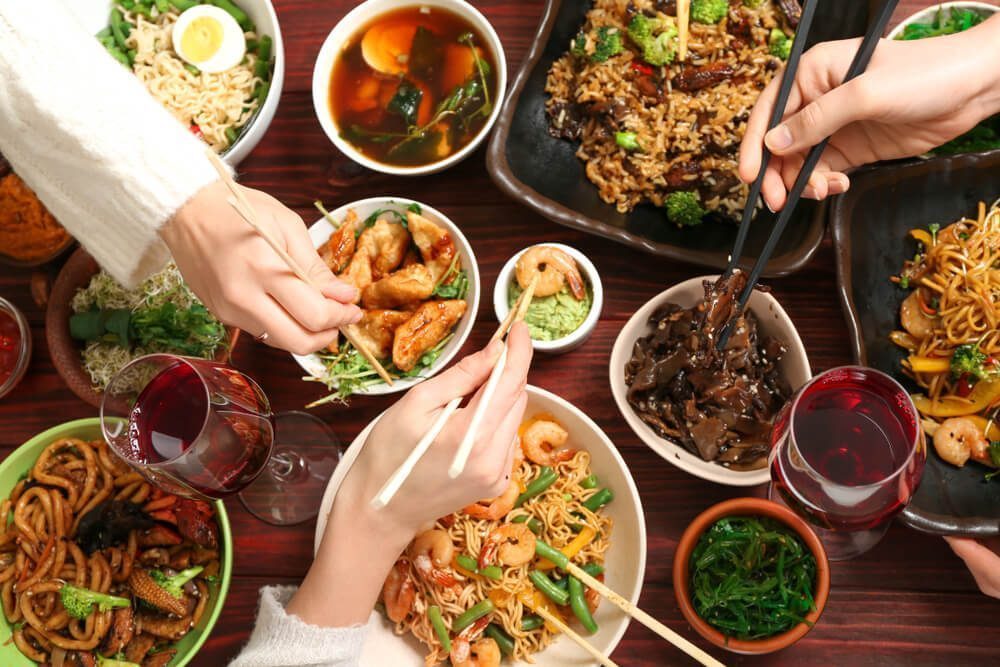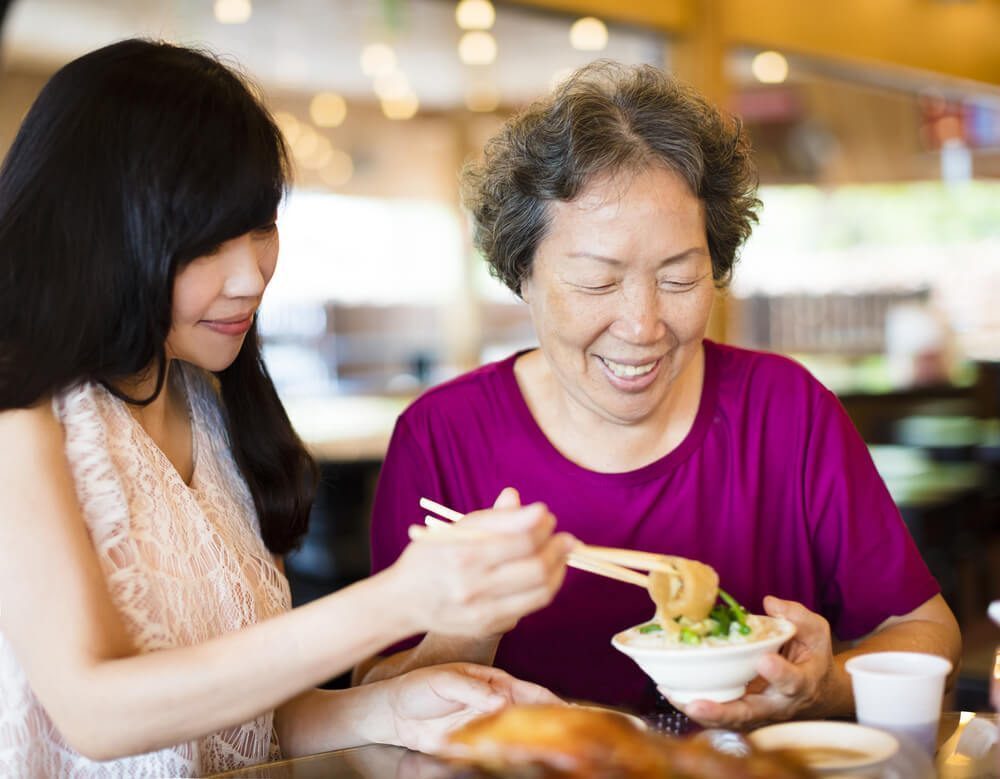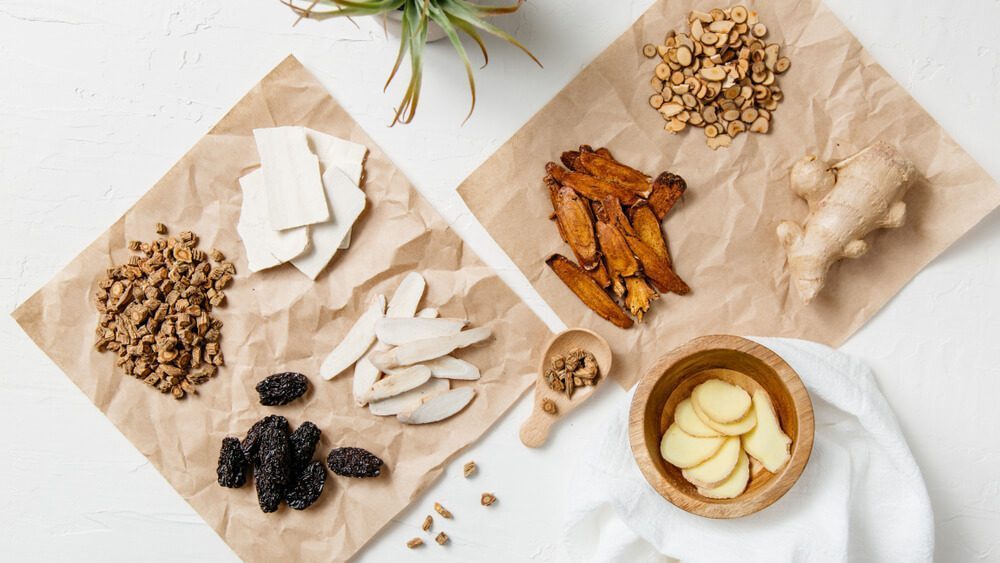China is a country with a lot to explore. Not only is it renowned for the country’s achievements and contributions in the international scene, but it is rich in history and culture that goes far back to the dynasties era. For tourists like you, China has a never-ending list of attractions to visit, traditional food to try, amazing festivals to enjoy, and many more!
Everything You Must Know about China
Traveling to China should be on your bucket list because there are tons of fun things to do and explore in this beautiful land! Imagine visiting many cities with rich historical places and trying the local or traditional foods, going to the mountains and enjoy the panoramic beauty of China, or having fun in local festivals and enjoying the street foods and sweets. There are endless things to see and do in the bamboo curtain country, so let’s find out more!
A Brief History of China
The history of China is known as one of the oldest cultures in the world. Based on the records, China was ruled by many dynasties. People believe it started with the Xia Dynasty from 2100 B.C. for 500 years. The next ruler was Shang Dynasty when the legendary Confucius started gaining attention and became known for its famous philosophy, “Confucianism”. Other remarkable points from different dynasties and kingdoms are including the Great Wall, thousands of terracotta statues, the Silk Road, the Opium Wars, and the rise of The Republic of China by Sun Yat-Sen, a western-educated revolutionary.
China’s Geography and Tourism
Although China is one of the biggest country in the world, the majority of the population inhabits only around 12% of the land in the lowland plains. The rest of the vast land consists of mountains, foothills, plateaus, plains, and basins. Due to the geographical differences, the Chinese government has divided the areas into five major regions: Eastern China (northeast plain, north plain, and southern hills), Xinjiang-Mongolia, and the Tibetan highlands.
In the west, there is the Tibetan plateau, while the Sinkiang-Mongolia region is located in the north. Both regions consist of mostly high mountains and deserts, like the Gobi desert in Mongolia, and fertile grassy platoons. The third region, the Eastern China, is the most important area. Besides being fertile as agricultural land and a population concentration, this region is the center of all important industries in China. Each region has distinctive lifestyles and customs, so it’ll be interesting for you to visit each and explore the unique cultures!
1. Mountains
Chinese mountains are beautiful and some are even famous for its religious and cultural heritage. Among those, the Five Great Mountains or Wu Yue has become the best destinations. Those famous mountains are spread in five different directions and resemble the five Taoist elements, i.e. Gold, Wood, Water, Fire, and Soil. They have been sacred locations of ancient mount gods worshiping, especially by emperors throughout ages.
Tourists have a long list of China mountains to discover when making a visit to the country. But at least, the following ones should be on the top destinations to not miss:
Mount Tai in Taian City
Located in Taian City, Shandong Province, this mount is about 80km away from Jinan City on its north or 85km away from Qufu City on its south. The best seasons to go are spring, summer, and autumn, or from May to November for one to three days of trip. The mount gains attractions among of tourists based on the following interesting facts:
- Mount Tai is the first rank object among the five great mountains and listed as a World Heritage Site by UNESCO.
- It has been known as a sacred worshiping destination by emperors from Qin Dynasty to Qing Dynasty once they gained the throne as it resembles the peace and prosperity of the country. That is why it is called “tai” in Chinese which means stability and peace. There is also an old saying “if Mount Tai is stable, so is the entire country”.
- It has other popular names, i.e. Daizong, Mount Daishan, Dai Mountain, and Eastern Mountain. Here, visitors get the spectacular views of the sunrise, the sea of clouds, golden belt of Yellow River and the sunset.
- The picture of Mount Tai can be seen on the back side of 5 Yuan RMB note.
Are you interested to visit Mount Tai? Before packing up your essentials and fly to China, you should know how to get to the mountain area. There are four routes to use as the entrance to Mount Tai:
- Red Gate Route – the highly recommended classic way in from the ancient times. Visitors will find many attractions including the Dai Temple from the Han Dynasty, the Jade Emperor Summit, Hutian Pavilion, Daizong Archway, Southern Heavenly Gate, Doumu Palace and Confucius Temple.
- Tianwai Village Route – starting from World Plaza to Middle Heavenly Gate. It will take about 30 minutes of bus tour where many historical sites and natural sites landscape to be seen along the trip. Take for example the Wuzian Memorial Temple, Puzhao Temple and Sanyang Temple.
- Peach Blossom Valley Route – a route from the northwest (Peach Blossom Valley and Peach Garden) to Jade Emperor Peak. Tourists will see many cultural relics especially the Forest Museum of Mount Tai a.k.a Southern Gate. To reach the summit, it is possible to walk or take cable ways from Peach Garden.
- Primitive route – a trip from Tianzhu Peak on the back of Mount Tai. This is the most favorable way to reach the summit among those who prefer native wild interest and DIY tour.
Mount Huangshan or The Yellow Mountain
Mount Huangshan or The Yellow Mountain is located in Huangshan City, Anhui Province. The best time to explore it is in autumn or from September to November for at least two days. Some quick facts about the Yellow Mountain are:
- It is a member of the Five Great Mounts, known as Western Yue.
- Mount Huangshan is listed as a World Heritage Site by UNESCO for its beautiful mountain landscape where tourists can see weird shapes of pines, bizarre rock formations, sea of clouds, sunrise and sunset. It offers the most adventurous hiking experience.
- Its original names are Zhong Hua and Hua Xia. It’s called the Yellow Mountains because of the old belief that it was where the Chinese mythical ancestor known as the Yellow Emperor lived, purified valuable herbs, and turned into supernatural beings.
Within its large of 148sq km, Mount Huangshan has 5 peaks spread in four directions and one in the center. If you’re coming to visit Mount Huangshan, try to visit a couple or all five peaks:
- The North Peak – offers the best spot to take a look at the other three peaks and Black Dragon Ridge by standing on its platform.
- The West Peak – a complete giant stone on the summit lets visitors get the foremost view of sunset. The natural landscapes even hide the legendary Chinese mysteries, including the famous story tale of Chenxiang, a young boy, who rescues his mother by cracking the mountain.
- The South Peak – claimed as the highest peak of the mountain that also makes Mount Huangshan becoming the highest one among the Five Great Chinese Mountains.
- The East Peak – offers the best spot to see the sunrise on its four hills. There is also a well-known place named Huayue Fairy Palm, a marble stone formed like a giant hand.
- The Middle Peak – also known as Peak of Daughter Yu, where tourists will get local folk stories at many of its attractive sites.
Mount Emei in Leshan City
The Emei Mountain is located in Leshan City, Sichuan Province and is very famous among Buddhists in China. Each morning, the pilgrims with joss sticks climb the steep stairs to the top and get into a number of temples. Being listed as a World Heritage Site by UNESCO, this mount gets another call as a sacred Buddhist haven.
Haikou Shishan Volcano in Hainan Province
Located 15 kilometres from Haikou city in Hainan Province, the Haikou Shishan Volcano which is part of the national park is a natural volcanic geology museum that offers an amazing look. This is one of the active volcanoes of Holocene Epoch. Places around Haikou Shishan Volcano are overgrown with tropical fruits and primary forests. In addition, there are also 72 underground karst caves where the most famous are Cave Wolong and Gua Xianren.
2. Plateaus
Besides mountains, the plains are also popular as tourist attractions. Opening the plateaus as tourist attractions in China sparks the tourists’ curiosity about the beauty of the land. There are four major plateaus in China: Tibetan or Qinghai-Tibet Plateau, Inner Mongolia Plateau, Yunnan-Guizhou Plateau, and Loess Plateau. Each plateau has its own differences and characteristics.
Tibetan Plateau in Tibet
As its name suggests, the Tibetan Plateau can be found in Tibet, a special autonomous region of China. With an average elevation level between 4,000-5,000 meters, this plateau is often nicknamed as “Roof of the World”. Tibetan plateau is not as famous as other tourist destinations, but it is a place you should visit, especially if you like natural and cultural tourism. Some of the best places in Tibet must be really visited, such as Mount Qomolangma (or Mount Everest), Namtso Lake, Mount Kailash, Jokhang Monastery, Yarlung Tsangpo Grand Canyon, etc.
Inner Mongolia Plateau
This plateau is the second largest plain in China, and it is politically divided into between Mongolia, China, and Russia. Covered with a vast grassland and gentle terrain, Inner Mongolia Plateau has been renowned for its livestocks. There are also some parts of the land that is covered by the uninhabited Gobi desert. The majority of the population here is the Han (Chinese), but there are also populations of Daur Mongols Hui (Chinese Muslims), Manchu, Evenk (Ewenki or Ewenke), Koreans, and Oroqen (Elunchun).
Yunnan-Guizhou Plateau
The Yunnan-Guizhou Plateau covers the east side of the Yunnan province and most of Guizhou province area, hence the name Yunnan-Guizhou Plateau. This plateau has many mountain ridges, valleys, and rugged landforms. And its terrain goes from northwest to southeast of the area. One of the famous attraction you should visit when traveling to Yunnan-Guizhou Plateau is Huangguoshu Waterfall, a well-known and also the largest waterfall in China.
Loess Plateau
This plateau is located in north/northwest side of China. The Chinese name is Huángtǔ Gāoyuán, which can literally be translated to Yellow Earth Plateau. It has the average height of around 4,000 feet and covers around 154,000 square miles. This plateau has fragmented land forms that consist of many ravines and gullies due to long-term scouring.
3. Deserts
Mainland China has several desserts spread throughout its vast land, including the infamous Gobi desert. The beauty of the deserts in China is not inferior to the beauty of the mountains there. You can find unique charms that differ from one desert to another.
Gobi Desert
Hearing the word desert, what first occurred was barren land conditions and the view as far as the eye could see only sand. Who would have thought, the Gobi Desert holds the world’s most beautiful natural scenery that can be found on Crescent Lake. The landscape of this infamous desert consists of oddly shaped weathered stone forests, honyecomb stones, wind-eroded mushroom stones, and wind-eroded stone pillars.
In this desert, you can also marvel at the spectacular view of the Grand Canyon. Another interesting part of the desert is Mandela Mountain, which is also called the “living fossil of the art world” due to the rock paintings that portray a vivid record of hunting and ranching. If you’re planning a visit to the largest and most infamous desert in China, it’s best to come in between May and October.
Taklimakan Desert in Xinjiang
Taklimakan Desert is the second largest desert in China, but it is also a dangerous shifting desert, second largest to Rub’ al Khali Desert in the Arabian Peninsula. The name ‘Taklimakan’ itself comes from Uygur language and holds the meaning “go in and you will never come out”, hence Taklimakan desert is also nicknamed as “the Desert of Death”.
Despite the omnious names, Taklimakan Desert is a sight to behold and a great place to visit for the adventurous souls. You can see Mount Shengmu, two huge red and white-colored sand dunes, that has unique mushrooms growing as tall as 5 meters. On the East side of the desert, you can visit Turpan Basin and venture to the ruins of cities built in 200 BC right on the ancient Silk Road.
It’s best to travel to Taklimakan Desert from autumn to the following spring, and the 20-days period spanning from late October to mid-November each year is the golden time you won’t want to miss!
Gurbantünggüt Desert in Xinjiang
Gurbantünggüt Desert is China’s second largest desert, and it also has a unique landscape that is intermixed with oasis. Its location in the heart of Dzungarian Basin in Xinjiang, and sandwiched between Manas River and Ulungur River, allows the desert to have a sufficient source of water. Although it is a desert, this desert is perhaps the most urbanized desert in China. On one side of the desert, you’d see Mongolian gazelles walking among desert poplar, black saxaul, and other natural plants; while on the other side, you’d get a familiar scene of a modern oasis civilization, irrigation system, electric wells, and tractors.
If your interest is piqued, book your ticket whenever’s convenient for you because the desert is convenient and great to visit all year round.
Badain Jaran Desert in Inner Mongolia
As the third largest desert in China, Badain Jaran Desert covers several regions in China, namely Gansu, Ningxia and Mongolia. This desert also has the highest sand dune in the world with its height ranging from 200 to 500 meters. The sand dunes won’t change shape even though they were hit by a very strong desert wind as the sand dunes here are united by water inside the sand layer. One of its famed sand dunes is the Singing Sand Mountain. Its height reaches 200 meters, and the sound of sand falling could reach several kilometers around the area.
Besides sand dunes, Badain Jaran Desert is also known for its other features, such as unique mountains, a hundred of lakes with plenty of reeds and fishes, mysterious springs, and mysterious temples. Similar to Gobi desert, the best time to visit this desert is in between May and October.
Popular Tourist City in China
When you’re traveling to China, you might wonder which city you should visit. Should you visit this city or that city? Will there be anything fun or interesting in this city? Worry not, because each city in China has unique charms, especially the ones frequently visited by tourists. Here are some of the top tourist cities with various attractions.
1. Beijing
For more than 700 years, Beijing has been China’s capital city, offering a rich history from both ancient and modern times. This mix of two differing timelines could be seen in the large amount of palace complexes and the modern buildings in the city. Beijing is a popular choice for first-time travelers as it’s easy to get here; you can get here by plane or high-speed train. Here are some of the most recommended attractions to visit while you’re exploring Beijing:
- The Great Wall of China
- The Forbidden City
- The Temple of Heaven
- The Bird’s Nest
- Summer Palaca
- Great Wall of Badaling
There are many tours that will bring you around Beijing city or hike the Great Wall. Or you can discover hutongs (narrow street or alley commonly associated with northern Chinese cities) from on top of a rickshaw. Getting tired of taking a tour, you can try to find typical food in China, one of which is Beijing duck. The interesting thing about Beijing ducks is that they have a history of more than 100 years and boast an extraordinary reputation. Not only that, but you can also see the Beijing Opera which shows a number of stylish actions, including singing, dancing, dialogue and acrobatic fights to tell a story or present a character in Shanghai.
2. Shanghai
A vacation to China is incomplete if you don’t visit Shanghai, the biggest city in China with a modern vibe that rivals New York and Paris. Shanghai plays an important role in the Chinese econmoy and has a long, valuable history. Like Beijing, this city has many interesting tourist attractions. There are many landmarks and museums that you can visit when traveling to Shanghai. Here are some of the top attractions in Shanghai:
- The Bund
- Century Park
- Yu Garden
- Zhujiajiao Water Town
- Shanghai IFC
- Shanghai Disneyland Park
- Shanghai World Financial Center
- People’s Square and People’s Park
- Jin Mao Tower
- Shanghai Old Street
- Qibao Ancient Town
If you want to get Chinese souvenirs, you can get them in various markets there, one of them is Nanjing Road or also known as Nanjing Lu. It is a major shopping centre in Shanghai. Nanjing Road is also known as the longest shopping area in the world. This area is divided into two, namely West Nanjing Road and East Nanjing Road. At West Nanjing Road you can see luxury shops selling branded items, while at East Nanjing Road you can see shops while relaxing on foot.
3. Xi’an
Did you know that Xi’an was the ancient capital of China before Beijing? As one of the top 3 popular tourist destinations, Xi’an’s charm is in the ancient relics and historical sites that hold many stories of the ancient Chinese civilization. There are also many other places to visit in Xi’an; here are some of the top attractions in the city:
- Qin Terracotta Army
- Xi’an City Wall/Fortifications of Xi’an
- Great Mosque of Xi’an
- Giant and Small Wild Goose Pagoda
- Shaanxi History Museum
- Bell Tower of Xi’an
- Stele Forest
- Banpo Neolithic Village Museum
- Huaqing Palace
- Drum Tower
- Muslim Streets
Some fun activities you can do while visiting Xi’an are, of course, visiting the amazing collection of ancient Terracotta army statues, riding a bike on the Ancient Xi’an City Wall, and trying the snacks at Muslim Street.
Read Also: 7 Places You Definitely Don’t Wanna Miss While Visiting China!
Transportation in China

The system of transportation in China today is very comprehensive, covering all networks, i.e. highway, air, rail, waterway and urban. They have been changed better dramatically compared to years before 1949 to improve the locals’ daily lives. Here are five kinds of transportation, people in China mostly use:
1. Airplanes
Taking a flight is not only the fastest way but also the most convenient one to travel, be it an international or domestic trip. It is easy to find international airports in China with many options of gateway. Take for example Beijing, Hong Kong and Shanghai.
2. Trains
For domestic trips from one city or region to another, the most reliable transportation mode is trains. It allows passengers to enjoy the surrounding views along the way. Some popular routes among tourists, especially by the highspeed trains, are Beijing – Xian, Xian- Luoyang, Chengdu – Chongqing and Yichang – Wuhan.
3. Bus or Private Car
Highways can easily be found in China. Since it is not always possible going to the remote areas by flight or train, tourists can take a bus or rent a car. If it is going to be a long trip, buying the ticket in advance is highly recommended. Another alternative transportation mode is a car. Tourists can drive on their own, but it is better to go with private guides and/or experienced drivers, especially when travelling in China for the first time.
4. River cruise
The number of rivers, streams, lakes and canals in China is a lot more than what other countries have. There are at least 5800 rivers, with the main navigable ones including the Yellow River, Yangtze River and Beijing Hangzhou Grand Canal. Since passing through the river is just an optional way reaching another place, locals provide river cruise sailing service to let tourists relax and enjoy the sightseeing along the way.
5. Metro
Since 1995, Shanghai Metro has served the Chinese big cities by loading a large number of people to travel within short distances at high speed. It is very favorable among workers because they won’t need to deal with the traffic jams around the rush hours.
The Rich Cultures in China
The Chinese culture has an extensive history and values that have existed since thousands of years ago. As the country is a mix of many ethnicities, the Chinese culture is a combination of diverse and unique cultures that co-exist together as a harmonious blend. It’s also heavily influenced by Taoism, Confucianism, and Chinese Buddhism; the values from these beliefs and religions have greatly influenced the development of Chinese cultural aspects and life. So, what’s special about the culture?
Ethnicities and Languages
Mainland China is a mix of people from different ethnicities living in the same land. The major ethnic group is the Chinese Han, followed by minority groups: Zhuang, Mongolians, Hui, Miao, Uyghur, Manchu, Tibetans, Yao, Naxi, and more. Each group has their own values and traditions they hold on to this day, and it gives each ethnicity a uniqueness that cannot be found in other groups. For example, get to know the Huis (Chinese Muslim) culture and taste their famed Lanzhou Hand Pulled Noodles, the Miaos who are known for their Lusheng music and fine architecture, or the Manchus’ extensive history as the creator of the Qing Dynasty.
The Chinese language has various dialects. In order to have better communication, the government chose one to be the official language, namely the northern dialect, commonly called Mandarin. This language is used by around 70% of the Chinese people and is used in schools as the language of instruction. Other variations of Chinese are Wu, Yue (Cantonese), Xiang, Min, Hakka, and Gan. Each has its own dialect.
Chinese Arts and Performances
Chinese art is know for being greatly influenced by their spiritual and mystical beliefs, values, and history. Some of the arts and crafts that have been created are even influenced by Taoism, Confucianism, and Chinese Buddhism; thus, there are many paintings or statues that depict the deities. The art tradition has been fastidious in its continuity and traditions. It covers several facets like folk art, decorative art, fine art, performance art, porcelain pottery, and many more. Besides paintings and ceramics, here’s a list of the popular Chinese arts and crafts:
- Chinese calligraphy
- Chinese lanterns
- Chinese embroidery
- Chinese silk
- Chinese jade articles
- Chinese paper umbrellas
- and more.
Performing art always has a special place in each culture, especially one with an extensive history like the Chinese culture. The most popular performing art among tourists is the performances in Beijing Opera, which showcases fancy moves, acrobatics, singing, and musicals. Here’s some performance arts you can check out while visiting China:
- Chinese Kungfu
- Chinese Acrobatics
- Chinese Traditional Music
- Chinese Musical Instruments
- Chinese Folk Dance
- Chinese Shadow Plays
- Chinese Puppet Plays
Traditional Chinese musical instruments refer to all types of musical instruments used in Chinese culture. Erhu(二胡 – Chinese fiddle, his body uses snakeskin as a membrane, uses 2 strings, which are swiped with a bow made of horsetail, Banhu(板胡 – Chinese fiddle, with a body made of coconut shell with a wooden board as its membrane, Liuqin(柳琴)- Small stringed instruments like pears with 4 strings, Ruan (阮)- 4 string round stringed instruments, Konghou(箜篌)- Chinese Harp, Dizi(笛子)- Flute using membrane shakes, Suona(唢呐)- Chinese trumpet.
Festivals in China
Watching traditional festivals is one of the best reasons why travelling to China. As a large number of tourists will come across, it is important to make advance plans and ticket purchases to be able to catch the dates. These are some famous Chinese festivals to not miss:
1. Chinese New Year
Also called Spring Festival, the Chinese New Year is usually held within 15 days. As the most important event for Chinese people, they usually celebrate it by having many activities like setting off firecrackers, performing dragon dances and making dumplings.
2. China’s Lantern Festival
The last day of the Chinese New Year is a moment for the Lantern Festival. It has been a tradition since 2000 years ago where people will display lanterns in various colors, shapes and sizes.
3. Qingming Festival
It is called Tomb Sweeping Festival where people will visit graves and burial grounds with the purpose of praying respects to their ancestors. Then, they will enjoy the spring season by going for a picnic.
4. Dragon Boat Festival
Dragon Boat Festival is held on month 5 day 5 of the Chinese lunar calendar. People enjoy it by having dragon boat racing and eating rice dumplings.
5. Double Seventh Day
The Double Seventh Day, also widely known as China’s Valentine’s Day, falls on the 7th day of the 7th month in the Chinese lunar calendar. This festival is based on a romantic legend of a weaver girl and an ox herd. The Double Seventh Day has been celebrated since the Han Dynasty period with many ancient traditions, such as showcasing skilled needleworks under the moonlight while gazing at the Vega constellation. Nowadays, the traditions are rarely found except in rural areas as people express it by giving gifts to their romantic partner or going out on dates.
Taste Traditional Chinese Food
Food-lover or not, trying China’s traditional food should be on your list while visiting the country! At this point, you would’ve known that China is a vast country with rich cultures that vary per region. Those differences have also affected the cooking style and cuisine of China, creating thousands of authentic Chinese dishes and desserts.
Savory Chinese Cuisine
Having a rich history, China’s traditional dishes are refined through decades of recipe, cooking skills, and various ingredients. The traditional foods strongly emphasize on appearance, color, aroma, taste, and meaning. If you don’t know which food to try first, here are some popular dishes among tourists:
1. Fried Rice (Chǎofàn)
Before you dismiss the simplicity of fried rice, you should know that rice plays a big role in Chinese households’ meals. It’s definitely easy to make, but it’s also easy to modify the simple dish with various ingredients such as meat (shrimp, pork, chicken, etc.), veggies, and spices. Depending on where you order your fried rice or even the province you’re in, you might get a whole new taste of fried rice.
2. Hotpot (Huǒguō)
As the rising star of Chinese cuisine, nothing can beat having hotpot in the mainland! You can put in slices of meat, veggies, seafood, noodles, and many more into the pot filled with broth. The taste of your hotpot will differ depending on which broth you choose and which sauce you use. As for the broth iself, there are many variations to choose from, such as original, spicy, mushroom, and more. The classic one is peanut butter with smashed garlic and chopped onion, complete with sesame oil.
Hotpot is not just about putting in various ingredient into a boiling pot with special sauce; it’s about the togetherness, sitting down with your loved ones and sharing a meal. That’s the true experience of enjoying a good hotpot.
3. Peking Duck (Běijīng Kǎoyā)
No need to be confused with the name of this one dish, because actually, Kaoya is a term for Peking duck by the old Chinese society. This famous Beijing dish is infamous for its thin, crispy skin and savory taste. It’s even considered a national dish! To make this dish, the cooks usually season a whole duck and leave it to dry for 24 hours before cooking it in a hung oven.
Peking duck is usually served in three-courses: thin slices of crispy duck skin, the soft and savory duck meat, and the bones cooked in a broth. As the skin and meat are cut into bite sizes, people usually wrap them in thin Chinese pancake, add some veggies or cucumbers, and top it with hoishin sauce. Yum!
4. Mapo Tofu (Mápó Dòufu)
Infamous for its spicy flavor, Mapo Tofu is one of the popular traditional Chinese dishes. This dish comes from Sichuan Province, an important province with a great influence on the Chinese culinary style. It’s prepared from finely chopped tofu and cooked with peanut paste, ground meat, chilli oil, Sichuan chilli pepper, spring onions, and other herbs. Mapo Tofu is a well-balanced dish: the silken tofu that crumbles easily on the tongue, the textured and chewy ground meat, and the flavorful taste that leaves a strong impression. Challenge yourself to try this spicy but delicious dish!
5. Kung Pao Chicken (Gōngbào Jīdīng)
Originating from Sichuan province, the Chinese Kung Pao Chicken is hotter and spicier thanks to Sichuan peppers. It’s a well-known dish outside of the mainland, but you should still try the local ones to know how it’s originally served. This traditional spicy stir-fry chicken dish is easy to find in many restaurants, so be sure to order one when you’re having a meal!
Chinese Sweet Delicacies
After eating a whole savory meal, sometimes you crave for a sweet food or snacks to end your meals. And there’s no other way than to try out some traditional or local Chinese desserts. Here are some of the most popular delicacies you should try when traveling to China:
1. Red Bean Buns (Dòu Shā Bāo)
Similar to the infamous baozi, Red Bean Bun is the sweet steamed bun version of baozi with red bean paste fillings. Be careful not to mistake it with chocolate as red bean filling looks really similar in color and texture to chocolate. Red Bean Bun is great when you’re not full after a meal but craving for something sweet. It’s filling, tasty, and worth trying!
2. Tanghulu (Táng Hú Lu)
Tanghulu, or also known as Bingtang Hulu, is a traditional Chinese snack that originated from Northern China since the Song Dynasty era. To make this, Chinese mountain hawthorn fruits are skewered on a bamboo stick before they’re coated with hard candy syrup. This treat tastes refreshingly sweet and sour. Nowadays, more variations of fruits are used, such as kiwi, grape, strawberries, and more. Because Tanghulu is very common and popular, especially in Beijing tourists area, you’ll definitely find many carts selling tanghulu to buy from!
3. Grass jelly (Shāo Xiān Cǎo)
This dessert is popular in East Asia and Southeast Asia, and it’s commonly consumed by Chinese people. Why is the name “grass” jelly? Grass jelly is made from boiling a plant called Chinese mesona, which is also called “fairy grass”. With a black jelly-like appearance and consistency, grass jelly has no taste, hence it’s often served in drinks or with condensed milk (you can find this mostly in Chinese restaurants). This refreshing dessert is great to clean your palate after a savory meal.
4. Almond Jelly/Almond Tofu (Xìng Rén Dòng/Xìngrén Dòufǔ)
This dessert has a tofu-like appearance with soft, agar-like consistency. It’s often served plain or with fruits. Although it’s named Almond Jelly, this dessert is made from apricot kernel milk, agar, and sugar; the name “almond” is the result of translation as “apricot kernel” is often translated as “almond”. This sweet treat is enjoyed by many people from Beijing to Hongkong and even South of China. So, you can find and try this dessert on many restaurants.
5. Dragon’s Beard Candy (Lóng Xū Sū)
Dragon’s Beard Candy is a handmade traditional Chinese sweets that got its name by, well, looking like a dragon’s beard. The creation of this dessert is a unique process, and it’s even considered as a traditional art as it was performed to entertain the Emperor of the Han Dynasty. Being sensitive to higher temperatures, Dragon’s Beard Candy is best eaten immediately after being made and has a relatively short shelf age. You can find this treat sold by street vendors almost everywhere.
Chinese Eating Custom
In China, the custom when having a meal is to sit down together on a table. You’ll be served a bowl of rice, and there are a few selections of dishes on the center of the table that will be shared among everybody present. The food from the dishes are grabbed with your own chopsticks or sometimes serving spoons. It’s a common practice to have a meal like this in Chinese households and restaurants as it promotes the togetherness value.
When having a meal, chopsticks are mainly used. There’s no need to worry of your chopsticks skill so long as you enjoy the meal. As food and togetherness are important in Chinese culture, if you’re eating at someone’s house or being treated to a meal by a Chinese person, they might put food on your bowl without asking. It’s their way of showing their hospitality and a very common practice in the households.
There are some things you should be aware of when traveling to China. Firstly, Chinese people don’t usually have sweet desserts after a meal. So, you’d have to scour the menu for a sweet dish or buy it from a vendor after having a meal. Secondly, you might encounter small pieces of bones or inedible parts when eating in a restaurant. In this case, you can ask for a side plate or an extra bowl for them before having your meal and use your chopsticks, hand, or a tissue to spit it out. Thirdly, you should be aware that eating noisily with one’s mouth often, slurping, and smacking the lips are fine in China. They’re considered as enjoying one’s meal. Lastly, on some popular local restaurants, the place might get crowded and filled with smokes as the evening approaches. As smoking is permitted in most Chinese restaurants, you could ask for a side room in larger restaurants to avoid the noise and smoke.
Chinese Souvenirs
Once you’ve visited China, of course you should bring back some handicrafts as souvenirs. China is rich in antiques, crafts, arts, fine clothings, and many more. There are many to choose from as a thoughtful or memorable souvenirs for your loved ones, and here are some commonly bought souvenirs from the country:
1. Tea

Despite changing dynasties, the tradition of drinking tea in China has become a necessity for everyone who lives there, including you who are on vacation. Chinese tea products are diverse from one region to another, and some of them even act as herbal tea that’s good for health. The five popular categories of Chinese tea are black tea, green tea, scented tea, brick tea, and oolong tea.
2. Traditional Chinese Medicine
China is a country that’s also famous for its Eastern medicine. Its herbal concoctions are well-known across the world. This traditional medicine has a history that starts since the beginning of the first dynasty. Whenever a royalty falls ill, the court physicians would use acupuncture or create a concoction made from natural ingredients such as ginger, ginseng, chrysanthemum, and more.
3. Pictures and Calligraphy
As famous art works from China, Chinese paintings and calligraphy works might be quite pricy, but their beauty are worth the price. You can also find a more reasonable price if you go to the markets, and you might even see the artist or calligraphy master creating their works. There are different calligraphy styles (cursive script, seal script, running script, formal script, and official script are a few of the main styles) that are available on fans, pottery, or on cloth. You can even ask for your Chinese name to be painted, but you should have a tour guide available to help.
4. Jade
In Chinese philosophy, jade symbolizes beauty, glory, determination, perfection, strength, and eternity. It’s believed to bring luck and good health. This stone has existed since more than 4,000 years ago, and it’s considered as a fine stone with a long spiritual history in Chinese culture. The most expensive one is the Imperial Green Jade, a translucent stone with a vibrant emerald-green color. Some jade products you can purchase as ring jewel beads, necklaces, bracelets, bangles, and brooches. As there are many fake jade products, you should be careful when purchasing one and buy from a certified dealer.
5. Silk Fabric
This fabric has been a favorite gift, especially for females. Being soft and smooth to the touch, the pricing for a fine quality silk clothing can be quite high. This fabric is also used to make the qipao, a traditional women’s clothing that exudes elegance. Silk products are not limited to clothing; there are other products you can buy: headscarves, bedding sets, bags, accessories, and more. The pricing is more affordable, and you can find them at tourist sites. You can even buy a roll of silk if you or someone you know is into fabric or clothes making.
6. Antique Ceramics
China is well-known for its antiques. This handicraft has a long historical value, and it’s one of the earliest works of art introduced to the world through the Silk Road. There are plenty of colors and patterns available on the market for you to purchase. Many of the old patterned ceramics describe traditional Chinese culture and life.
China is a wonderful country with many charms and tourist attractions. Traveling to China alone or with a loved one will surely be a memorable experience for you. There are many sights to see, places to visit, food to try, and things to buy. Book your flight ticket on Airpaz and enjoy your vacation!






